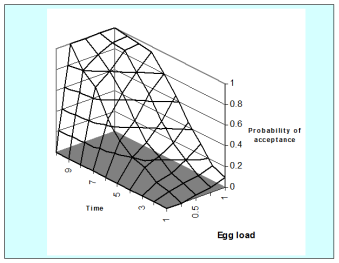As our summer holidays are usually in the south of France or Italy I expect to see a plethora of insects whilst sitting on a sun-lit patio with a glass of wine or beer to hand. I am rarely disappointed, this year (2015) swallowtails being very common. Also present, although not as abundant as I have seen in some years, was the European hummingbird hawkmoth, Macroglossum stellatarum, perhaps my favourite moth. Given that they were foraging so close to my watering hole, it seemed a great opportunity to use my new camera. I was able to capture images of the swallowtails, who obligingly remained still at the crucial moment I took the picture.
Swallowtail butterfly, Super-las-Illas, France, August 2015
I was however, unable to get a decent still shot of the hawkmoths so had to resort to the video mode.
Hummingbird hawkmoth, Super-las-Illas, France, August 2015. For the live action version see here
It was whilst trying to get a successful shot of these incredibly active insects that I thought I might catch one and slow it down in the fridge and thus be able to get a nice close up picture. As usual I had forgotten my butterfly net (one year I will actually remember to pack it) so had to improvise with a T-shirt and stick. Needless to say this was not very successful and I only managed a glancing ‘strike’ on my chosen victim. Not surprisingly he/she flew off. What was surprising was that the flower bed remained hawkmoth-free for about an hour or so. Once they returned I had yet another unsuccessful attempt at capturing one, and again noticed that they disappeared and did not return for another couple of hours. Intrigued I repeated my unsuccessful capture attempts (deliberately this time) over the next few days and found this behaviour repeated. So, no problems if I stood there and filmed/watched them, but if I tried to catch them, off they went (I was unable to see where) not to return for a couple of hours. I hypothesised that they must be able to ‘remember’ being attacked and that this was a predator-avoidance mechanism.
I knew that adult lepidoptera in general are able to ‘remember’ host suitability for oviposition sites and alter their concept of a good quality host depending on the suitability of the previous host plants that they had landed on and the number of eggs left in their reproductive tract.
A very simple model to illustrate the trade-off between host plant acceptance, egg load and time in lepidoptera. I thought I had published this figure somewhere but apparently not 🙂
Adult lepidoptera such as the green-veined white butterfly, Pieris napi (Goulson & Cory, 1993) and the Monarch Butterfly, Danaus plexippus (Rodrigues & Weiss, 2012) are also able to remember (retain) learned information about suitable feeding resources e.g. those flowers that are likely to give them the most nectar and this is also true for the hummingbird hawkmoth which is able to remember flower preferences even after hibernation (Kelber, 2010).
Although adult lepidoptera have a number of predator avoidance mechanisms, e.g. mimicry, aposematism, unpalatability or innate behaviours (e.g. Roper & Redston, 1987; Bowers, 1980; Greig & Greenfield, 2004; Stevens, 2005) I have been unable to find any reference to them being able to ‘remember’ being attacked and then avoiding the area for some time afterwards. There are, on the other hand, many papers about predators learning to avoid distasteful lepidopteran prey but nothing about adult lepidoptera learning to avoid predator-rich areas. This would seem a ‘sensible’ trait to evolve so I am surprised that no one seems to have tested its existence. Please let me know if you have ever come across any references to this sort of behaviour or feel free to conduct the experiment formally.
References
Agnew, K. & Singer, M.C. (2000) Does fecundity drive the evolution of insect diet? Oikos, 88, 533-538.
Bowers, M.D. (1980) Unpalatability as a defense strategy of Euphydryas phaeton (Lepidoptera: Nymphalidae). Evolution, 34, 586-600.
Goulson, D. & Cory, J.S. (1993) Flower constancy and learning in foraging preferences of the green-veined white butterfly Pieris napi. Ecological Entomology, 18, 315-320.
Greig, E.I. & Greenfield, M.D. (2004) Sexual selection and predator avoidance in an acoustic moth: discriminating females take fewer risks. Behaviour, 141, 799-815
Kelber, A. (2010) What a hawkmoth remembers after hibernation depends on innate preferences and conditioning situation. Behavioral Ecology, 21, 1093-1097
Rodriques, D. & Weiss, M.R. (2012) Reward tracking and memory decay in the Monarch butterfly, Danaus plexippus L. (Lepidoptera: Nymphalidae). Ethology, 118, 122-1131
Roper, T.J. & Redston, S. (1987) Conspicuousness of distasteful prey affects the strength and durability of one-trial avoidance learning. Animal Behaviour, 35, 739-747
Singer, M.C. (1984). Butterfly-host plant relationships: host quality, adult choice and larval success. In The Biology of Butterflies (ed. by R.I. Vane-Wright & P.R. Ackery), pp. 81-88. Chapman & Hall, London.
Stevens, M. (2005) The role of eyespots as anti-predator mechanisms, principally demonstrated in the Lepidoptera. Biological Reviews, 80, 573-588



